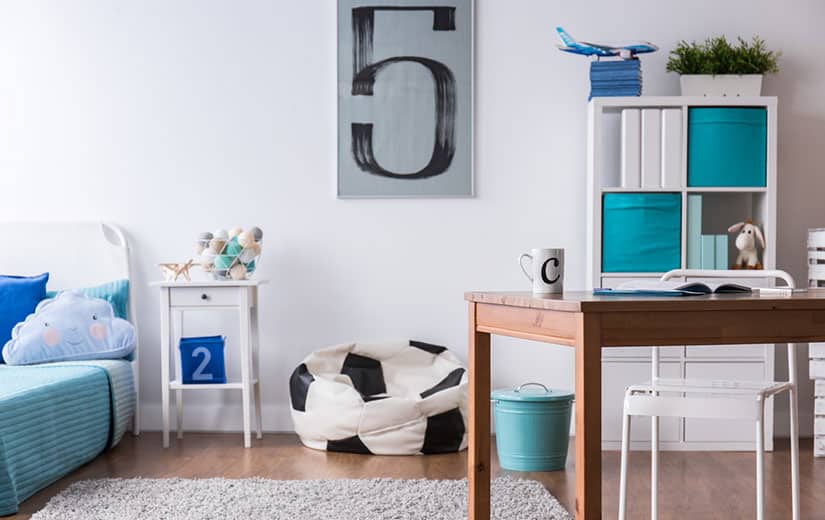Summary
History and origin
The Beni Ouarain Berber carpet is very popular in Morocco and around the world. Famous and prestigious, the “king carpet” is also very comfortable with its thick sheep’s wool.
The wool of the Beni Ouarain rugs comes from special sheep living in the Atlas Mountains. The « Marmoucha », these rustic sheep, produce high quality wool, both silky and slightly shiny. The excellence of sheep’s wool explains the superior quality of Beni Ouarain Berber rugs. This very special natural wool also turns out to be scarce. It takes several years to harvest enough to make a few rugs. Therefore, the Beni Ouarain Berber carpet is a product of Moroccan craftsmanship of great rarity.
This sheep’s wool is then woven in an artisanal way by the women of the Beni Ouarain tribe. Berber weavers follow an ancestral process.
The Beni Ouarain Berber carpet has become a must in Moroccan interior decoration. But, the tribe uses it above all as a blanket or mattress, and even as a family bed. To protect themselves from the harshness of winter in the Atlas Mountains, Berber families make large thick carpets in pure wool.
On the old carpets of Morocco often appear traces of burnt wool. The designers used to burn a few strands of wool from the Berber carpet to ward off evil spirits.
The different sizes
Given its initial use, the Beni Ouarain Berber rug has beautiful dimensions. A standard Moroccan wool rug is about 3X2 meters. The Berbers use a large rectangular carpet as down.
The small Beni Ouarain rug is harder to find than the white giants. These large carpets can be up to 3X4 meters. The great Beni Ouarain are recognized as a specialty of Berber women. Their loom makes it possible to make large carpets in pure wool. This particularity has remained intact in the Berber villages of the Middle Atlas. To make these large carpets, Berber women devote several weeks of work to them.
Over time, Berber weavers had to adapt to the global market. They now offer Beni Ouarain rugs of a more modest size. Nevertheless, carpets in an « exotic » format such as 140X200 cm remain unobtainable. To fit a Beni Ouarain Berber rug into small spaces, there is a solution. It consists of untying a few rows of knots, taking care to respect the symmetry of the wool carpet. The fringe of the carpet facilitates this manipulation.
The weight of the Beni Ouarain Berber carpet varies between 20 and 35 kg. The height of the wool of the Moroccan rug can be up to 4 cm.
Beni Ouarain rugs are both sturdy and stable. They turn out to be perfect as living room rugs. They stay in place, unlike other softer sheep’s wool rugs, such as the Azilal rug.
Style and pattern
Traditionally, the Beni Ouarain woven rug is black and white. The frame is off-white and the geometric shapes black, more rarely brown. This very understated black and white rug is suitable for any room in the house. Each Moroccan living room has its large handmade carpet. Thanks to its abstract artistic style, the Beni Ouarain survives all decorative trends.
The recurring geometric patterns are diamonds or triangles. These asymmetrical and minimalist designs transcribe the stories of the seamstresses. These decorative motifs are woven on the white background of virgin wool, hence their sometimes cream, ecru or ivory tone.
The sobriety of Beni Ouarain Berber carpets inspired European artists such as Le Corbusier, Paul Klee, Mondrian or Henri Matisse. The latter has given a place of choice to Beni Ouarain rugs in the world of interior decoration.
Unlike the Kilim rug or Boucharouite patchwork rug whose patterns vary a lot, the Beni Ouarain rug has remained unchanged since its origins. Berber seamstresses continue to weave the same geometric patterns on this two-tone rug. The Berber populations live withdrawn from the outside world. Therefore, Moroccan wool rugs are not influenced by global trends. The weavers, entrenched in the mountainous regions of the Atlas, remain faithful to their tradition.
The patterns of black and white rugs can seem archaic. However, these timeless designs fit very well into a current interior decoration. The Beni Ouarain, like a modern carpet, highlights the wooden furniture and goes very well with the Scandinavian style.
Price
The price of Beni Ouarain handcrafted rugs skyrocketed at the start of the 20th century. During the French Protectorate, Berber women were able to show their know-how. Beni Ouarain carpets have acquired a certain notoriety. A whole economy around the Moroccan carpet has developed. The Beni Ouarain represents a jewel of Moroccan craftsmanship.
Today, the Berber style rug is a sought-after ethnic decorative object. The price of Beni Ouarain takes into account the handmade. The price range is between 1000 and 3000 euros. It varies according to the size, the age of the Berber carpet, the quality of the sheep’s wool and the weaving. A much lower price indicates a Berber-style designer rug made of synthetic materials such as polypropylene or viscose. Certainly, these printed carpets are easier to maintain, but they do not have the charm of the Berber secret.
Vintage has a price… Antique Beni Ouarain rugs can be worth a significant amount of money due to intermediaries and “carpet dealers”. The latter overestimate the price of Berber carpets according to current fashions and trends. To buy a Moroccan rug at a fair price, it is best to find it in Berber villages and do business on the spot, with the maker.
Conclusion
Buying a Moroccan handmade rug means being interested in the history of nomadic tribes. The way of life of the Beni Ouarain Berbers turns out to be harsh and autarkic. The Beni Ouarain, made up of seventeen different Berber tribes, lead a pastoral life.
The tribe spends the summer with its herds of goats and sheep on the heights of the Atlas mountains. Then, it goes down again during the first snowfall. Sheep herds benefit from a varied and abundant diet. That explains the quality of the wool used to make Berber carpets.
The loom and pastoralism are the only sources of income in the household. This gives the woman weaver a special place in the family. Her job as a tailor gives her a certain dignity, in a deeply patriarchal Berber society.
The Berber secret, transmitted from generation to generation, keeps one of the most important areas of Moroccan craftsmanship. The black white checkered rug remains a unique piece.
Read also:
- The Azilal Rug
- The Boucharouite rug




